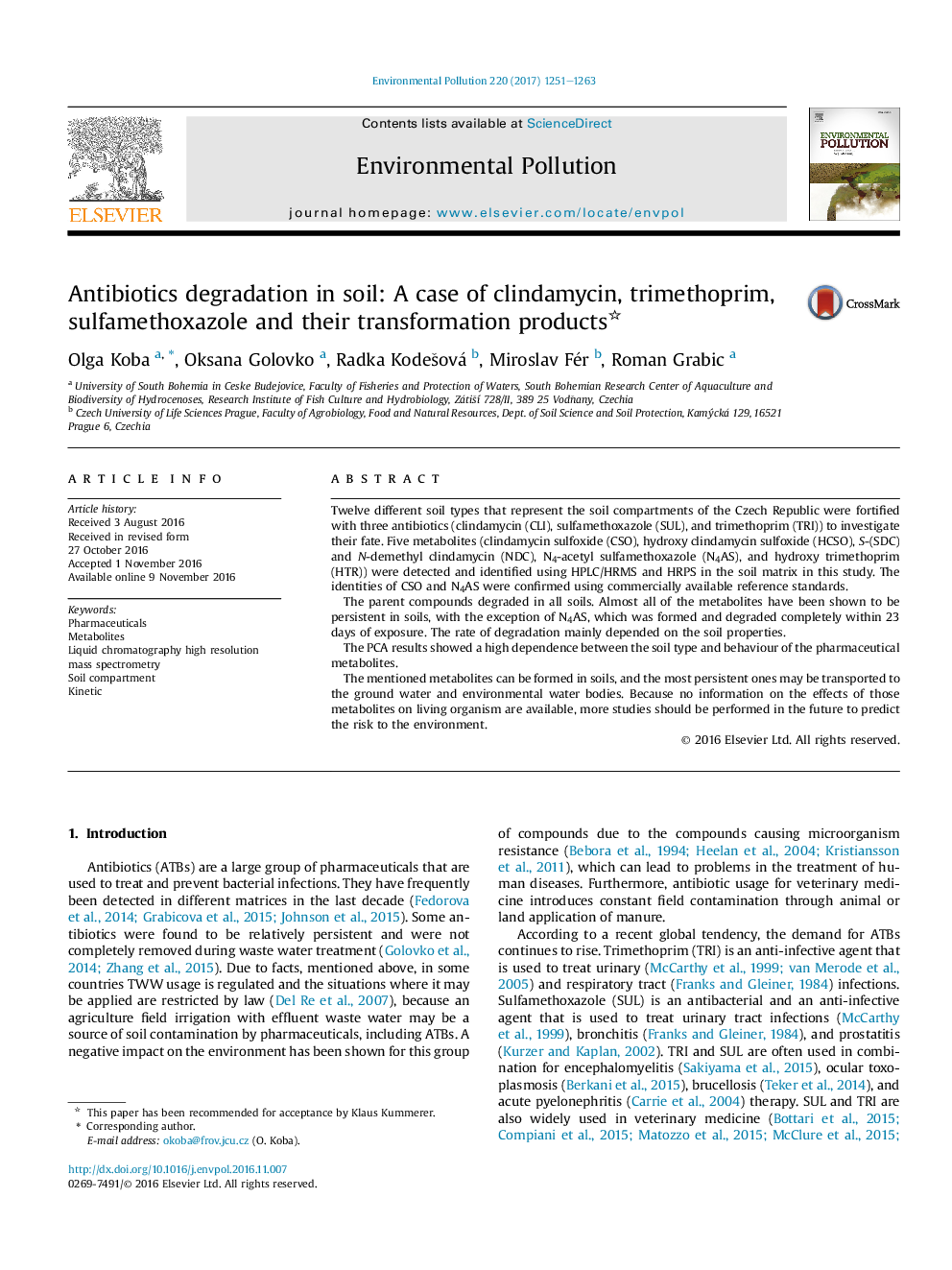| کد مقاله | کد نشریه | سال انتشار | مقاله انگلیسی | نسخه تمام متن |
|---|---|---|---|---|
| 5749555 | 1619153 | 2017 | 13 صفحه PDF | دانلود رایگان |
- The transformation of three antibiotics in twelve different soils was studied.
- Several known and novel degradation products were detected and identified.
- The fate of parent compounds and their metabolites was studied.
- Formation and degradation of all detected metabolites was soil type dependent.
Twelve different soil types that represent the soil compartments of the Czech Republic were fortified with three antibiotics (clindamycin (CLI), sulfamethoxazole (SUL), and trimethoprim (TRI)) to investigate their fate. Five metabolites (clindamycin sulfoxide (CSO), hydroxy clindamycin sulfoxide (HCSO), S-(SDC) and N-demethyl clindamycin (NDC), N4-acetyl sulfamethoxazole (N4AS), and hydroxy trimethoprim (HTR)) were detected and identified using HPLC/HRMS and HRPS in the soil matrix in this study. The identities of CSO and N4AS were confirmed using commercially available reference standards.The parent compounds degraded in all soils. Almost all of the metabolites have been shown to be persistent in soils, with the exception of N4AS, which was formed and degraded completely within 23 days of exposure. The rate of degradation mainly depended on the soil properties.The PCA results showed a high dependence between the soil type and behaviour of the pharmaceutical metabolites.The mentioned metabolites can be formed in soils, and the most persistent ones may be transported to the ground water and environmental water bodies. Because no information on the effects of those metabolites on living organism are available, more studies should be performed in the future to predict the risk to the environment.
267
Journal: Environmental Pollution - Volume 220, Part B, January 2017, Pages 1251-1263
